Cornwall Quoits and Coast (29 September 2009)
Quoit Collection
These Neolithic burial chambers would have had mounds of soil over the top of them but these are long gone. The Neolithic period dates from 4000BC to about 2400BC. I read that the Neolithic period is called the Age of the Dead, because most/all of the surviving ruins are associated with death. This is in contrast to the Iron Age, where the ruins are associated with dwellings and defenses.
|

Mulfra Quoit. This one has lost one side slab and the roof has fallen. The side slabs are about 1.5m tall. |
|
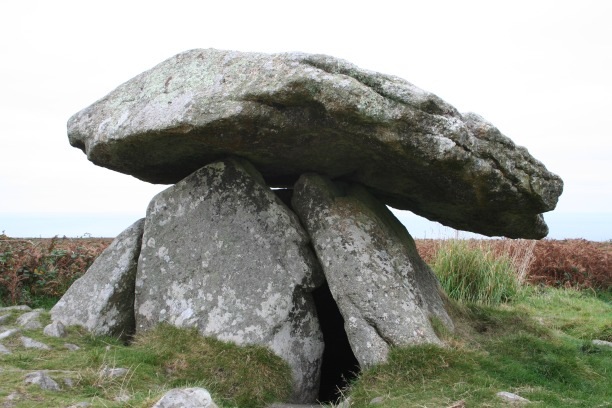
This is Chun Quoit, one of the best examples of a quoit. It has four wall slabs and a huge roof slab, and is about 1.8 m high. |
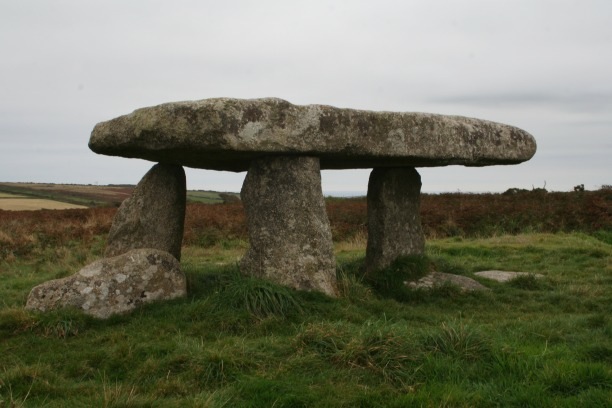
Lanyon Quoit fell down and was rebuilt in 1824 (AD not BC!), but the fourth stone was too broken to use. I presume the side stones are probably more separate than they would have been originally, since I think quoits were supposed to be a sort of chamber. |
Other Ancient Things

This is Men-An-Tol (literally stone with hole). The hole in the centre stone is big enough to crawl through; the two stones on either side are aligned ... but weren't originally. This is a Bronze Age structure (2400-800BC) |
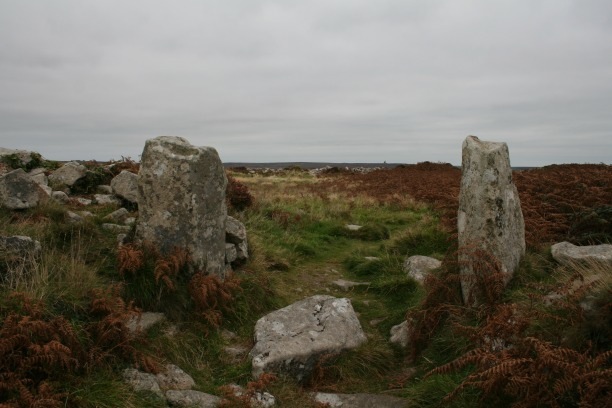
The Chun Hill Fort (which is referred to as Chun Castle, but this gives me the wrong mental image) is Iron Age (800BC-410AD) and is located near Chun Quoit. It was hard to capture this place photographically as it is both massive and only partly visible. It consists of two concentric walls of stone, now collapsed and overgrown. They would have been 3-6m high, and at least that thick, and the whole circular enclosure was 85m across. These two stones mark the entrance. You can see part of the outer wall moving around to the left of the left stone. |

Madron Chapel. There's a well/spring nearby and the tree over it is covered with strips of cloth that people have left, reflecting one of the original pagan practices that believed that as the rag deteriorated the hurt/injury of the person who left the cloth would also decline. This chapel dates back to the 1300s (in terms of its Christian dedication) but it is believed that its foundations are older, and the use of the well goes back into the Dark Ages. |
Mousehole and the coast
The village of Mousehole is SW of Penzance, and is largely full of tourists. It reminded me of Newfoundland, only not quite so brightly coloured due to being stone rather than timber.
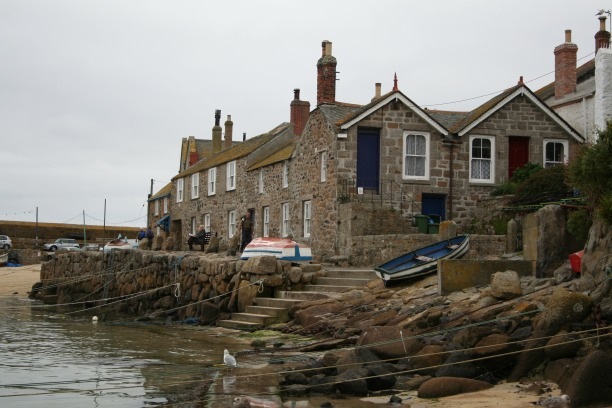
Houses on the edge of Mousehole harbour. |
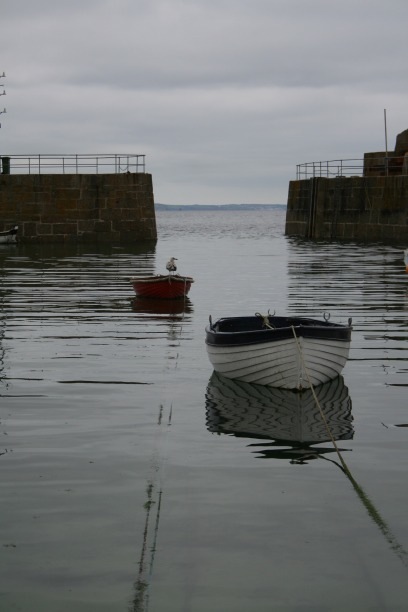
I presume this is how Mousehole got its name: there are two breakwaters on either side of the gap and a sheltered harbour inside. |

Coast at Guennap Head. This boulders are covered with thick lichens. |
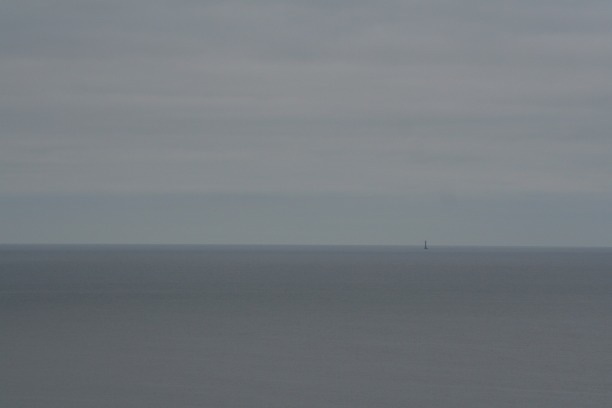
Wolf Lighthouse, some 13km off-shore. As you can see it was one of those grey days. |
Photos taken by Helen Chick.









